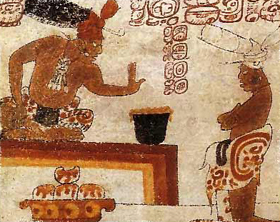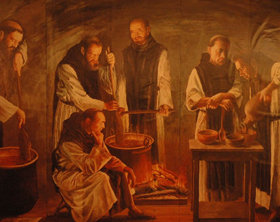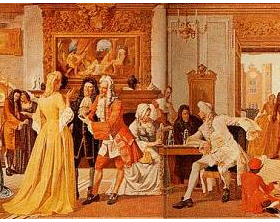
Cocoa beans were discovered by the Mayans as early as 900 AD. The Mayans mixed grounded cocoa beans with seasonings, spices and water to concoct a drink called “Xocoatl”. Indeed, cocoa beans were used entirely in a different way by the Mayans during this time. "Xocoatl" was a “bitter” drink but for the Mayan people, it was known as “Food for the Gods”.
By 1400 AD, when the Aztecs conquered the Mayan race, they use the name “Chocolati” for chocolate. Apart from being a beverage, the enterprising Aztec people used cocoa beans as currency for trade.

In 1502, Christopher Columbus brought cocoa beans to Spain and presented it to the Royal Spanish Court. At the time, the Spanish King and Queen uninterestingly perceived it only as a “bitter” cocoa bean. In 1528, the explorer brought back cocoa beans again, complimenting it with cooking tools and methods. It was only this time that cocoa was widely accepted and became popular in Spain.
The world's first chocolate shop opened in 1657 in the United Kingdom. During this time, chocolate has been largely used only as a beverage. More specifically, it was regarded as a luxury drink. The first types of chocolate stores were only accessible to men as venues for gambling and government functions.

In 1615, at Louis XIII and the Spanish Princess Anne d’Autriche’s wedding, Anne not only used a wedding basket filled with cocoa beans, but she was also familiar with artisans knowledgeable in the art of cocoa mixing and preparation. This was how cocoa found its place in France. During the reign of their son Louis XIV, the King influenced and popularized cocoa drinks extensively. In 1659, King Louis XIV authorized David Chaillou to establish Paris’s first chocolate shop.
During this period, Belgium was a Spanish colony and thus, cocoa beans and chocolate recipes were freely exchanged and made available in Belgium. Congo, a cocoa tree planting country was also a Belgian colony. Belgium then began to establish itself as the world’s “center for chocolate”.
The Great Wars that have swept the world also had a great impact in the development of chocolate. During World War I, England’s Queen Victoria would send the army chocolates as Christmas presents. Before 1930, chocolate bars were all a soldier’s daily ration. Until today, the military still believes that chocolate is a source of strength. In fact, chocolates are back-up food for the American army; it even follows astronauts into space!

